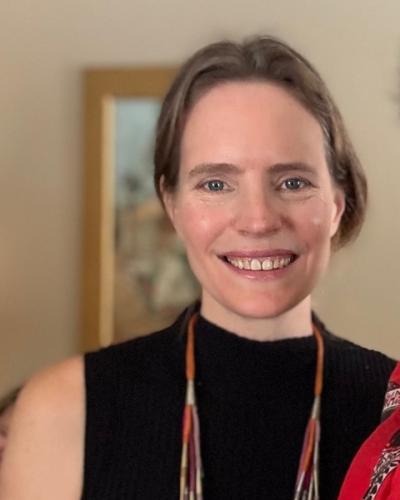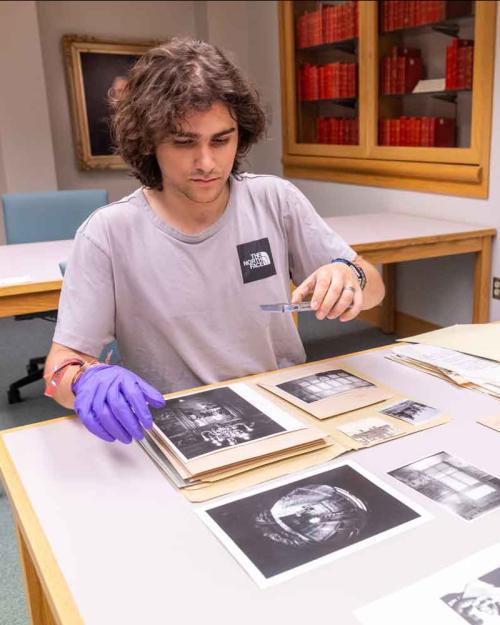Two older women keep watch from paintings on one wall of the former library at the A.D. White House and Aidan Goldberg ’25 is on a quest to find out who they might be.
That’s just one of the historical mysteries Goldberg is solving as he spends the summer putting together a history of the house, which was the home of Cornell’s first president, then housed the university’s art collection and today hosts the Society for the Humanities. The booklet he’s creating will be printed and available for visitors.
As a student in the Humanities Scholars Program, Goldberg is interested in poetry, writing and music and now also Cornell history.
“I feel humbled to be in this house and think about who’s been here before me,” he said. “I feel like a bit of a steward for the house now. It’s a really cool way to be connected to the school that I’m in.”
His summer living expenses are supported by a Humanities Scholars Program Summer Experience Grant, open to students working on a supervised humanities research project.
“Students, visitors, and other campus community members wander into the A.D. White House almost every day and say, ‘I’ve never been in here before. What goes on in this building?’ We also once heard a student tell her family just outside the main entrance of the building that this was where (Cornell President) Martha Pollack lives,” said Julie McLean, program manager for the Society for the Humanities. “We feel it’s time to communicate the lengthy and important history of the house, its foundation as a center for the study and contemplation of the arts and humanities and its continuation today as a center for humanities classes, events, research and scholarship.”
Goldberg has spent hours in Cornell Library’s Rare and Manuscript Collection, looking through photos and memorabilia from the house, including a guest book, maps from the years when the house was the university museum and programs from events that happened there, as well as diaries from A.D. White. He’s also sifted through boxes of documents in the house’s basement.
Among the many tidbits he’s gleaned from that research:
- The Big Red Barn used to function as White’s carriage house;
- A.D. White’s chair (which used to sit in every president’s office, but is really uncomfortable) is still in storage in the house;
- And the table in the dining room is an original from White’s time there.
He’s learned about A.D. White’s love for the humanities, his trips to Europe to enrich the university’s collection of books, his focus on excellent lecturing and his progressive thoughts about the importance of diversity in education.
Goldberg said although his academic interests usually lie in other areas, he does enjoy history when it’s mystical or he has a connection.
“I never thought I’d spend this much time in a house this beautiful, with so much history here,” said Goldberg, whose work this summer also includes staff support for events at the house. “Even taking out the trash or making sure the lights are off and the doors locked, I think about walking where A.D. White walked. And peeling back these layers of history does feel special and mystical to me.”
The history booklet, along with a map of the house, will be printed as part of the celebration of the Society’s 50th year in the A.D. White House. The Society has been in existence since the mid-1960s, but moved into the house in 1973 as the art collection moved over to the brand new Johnson Museum.
The celebration year will begin on Friday, Aug. 25, with a special welcome reception for Cornell humanities faculty and current Society fellows.






